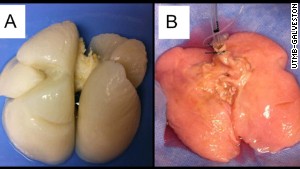The Zika virus epidemic has been declared an International Emergency by the World Health organization on the 1st February. The infection has spread rapidly and is now threatening to spread to other regions of the world.
The Zika virus has been associated with two dangerous medical conditions:
(a) Microcephaly: This is a condition in which the size of the head is distinctly smaller than normal. It occurs when the brains fails to grow and mature during fetal life. Since the brain does not grow, the skull does not grow either. The baby may have severe developmental anomalies, seizures, mental retardation, problems with muscular co-ordination and gait, difficulty in moving the eyes, lips, facial muscles etc.
Microcephaly
It has not yet been conclusively proved that the Zika virus causes microcephaly but the incidence of microcephaly has shot up in areas with the Zika virus epidemic and this has been considered serious enough for health authorities to advise women not to get pregnant in those areas. Zika infection in the first trimester is considered more risky than at other times in pregnancy.
(b) Guillan barre Syndrome (GBS): This is an autoimmune condition in which the immune system of the body attacks the nervous system leading to inflammation of the nerves with paralysis of the muscles. It occurs in adults. It starts with tingling and numbness of the fingers and toes followed by weakness of the muscles of the arms and legs. The weakness gradually spreads all over the body. If the respiratory muscles are affected, there may be acute difficulty in breathing. Mortality rate is high.
Spread of the Zika virus:
The Zika virus is spread through the bite of a mosquito known as the Aedes mosquito. This is a daytime mosquito found mainly in urban and semi-urban areas. It has typical white markings on its legs and body. It lays eggs in stagnant water in pots and containers around the house. It needs human blood to get nutrients for growth of the eggs.
Symptoms of Zika virus
The first symptom occurs about 2-7 days after the bite of an infected mosquito.
- In many cases, there may be no symptoms at all. Or the symptoms may be so mild that the patient does not realize that she is infected. These people can then become carriers of the disease.
- The early symptoms are fever, bodyache, headache muscular aches, conjunctivitis (pink eye) and a rash over the body.
- There may be a general feeling of ill health.
- Symptoms may linger for days before clearing up spontaneously.
Diagnosis
The Zika virus can be diagnosed by the presence of the virus in the blood (virological test) or by the presence of antibodies to the virus(serological tests). The virological test is positive in the first 3-5 days of infection. The serological tests are positive after the first 5 days.
Treatment
- There is no specific treatment for Zika. Medicines are prescribed for symptomatic relief .
- Painkillers like acetaminophen or paracetamol to manage the aches and pain. NSAIDS like ibuprofen and Naproxen should not be taken as they increase the risks of bleeding.
- Adequate fluids should be taken to overcome dehydration
- Rest
- It is best to avoid getting pregnant if a case of Zika is diagnosed in the locality. Contraceptives should be used.
- At present there are no vaccines for Zika. A vaccine (‘Zikavac’) is under production in India and is at the stage of animal trials.
Prevention
The infection can be prevented by (a) preventing breeding of mosquitoes in and around the house (b) avoiding mosquito bites.
a) How to prevent breeding of mosquitoes
- Drain out and remove anything around the house that can collect stagnant water, e.g. flower pots, bottles, drinking bowls of pets etc.
- Cover water tanks
- Attach mosquito screens over doors and windows.
- Clear away all collected garbage, including that around nearby eateries and restaurants.
b) How to prevent mosquito bites
- Wear long sleeved shirts and/or blouses at all time, especially during the day since the Aedes mosquito is a daytime biter.
- Use mosquito repellents.
- Use mosquito nets.





